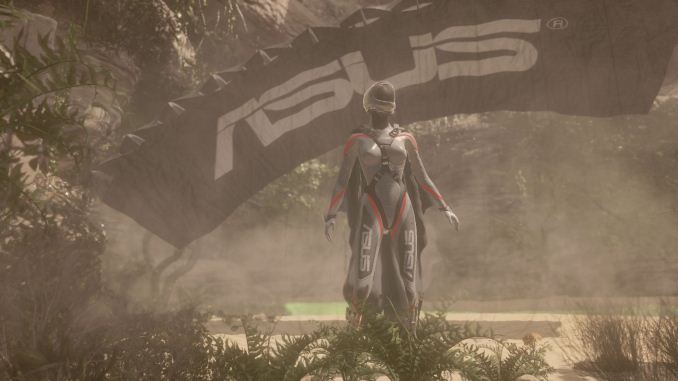3DMark Update Brings DX11 Sky Diver Benchmark
This afternoon Futuremark released an updated version of their 3DMark benchmark for PCs. The new release brings 3DMark to version 1.3.708 and includes a new benchmark for DX11 systems. All current owners of 3DMark will gain access to the new benchmark when they update, and it's also available to free users as well – and thanks go to ASUS for sponsoring the new Sky Diver Demo. Futuremark also has a current promotion going on where you can buy the 3DMark Advanced Edition off of Steam for $10 (normally 24.99), which gives you the ability to test other resolutions and settings.
Just to quickly rehash the current iteration of 3DMark, it has three tests: Ice Storm is a DX9 test and is available for mobile devices (smartphones and tablets) as well as PCs; Cloud Gate is a DX10 test for PCs, and Fire Strike is a very demanding DX11 test for PCs. The new Sky Diver benchmark fills the need for a less demanding DX11 test and is more suitable for testing gaming laptops and midrange PCs, as well as (potentially) iGPUs. Many of these devices can't even reach double-digit frame rates in Fire Strike, and while the scores are presumably still valid, it does make viewing the benchmark rather painful. Basically, Fire Strike is equivalent to running a modern DX11 game on Ultra settings, where Sky Diver is more like running with Medium/Normal settings.
While both benchmarks can be run on any PC with the necessary DX11 enabled hardware, Futuremark's advice is that systems that score below 2800 in Fire Strike should be tested with Sky Diver, while systems that score above 12000 in Sky Diver should be tested in Fire Strike. Also note that certain NVIDIA drivers appear to have a rendering issue with the Sky Diver benchmark; driver version 335.23 should be used if you experience problems.
Similar to the other benchmarks, Sky Diver has multiple components to its testing. Along with a Demo mode (which doesn't affect the score), there are two Graphics tests to measure GPU performance, a Physics test that focuses on CPU performance, and a Combined test that taxes both the CPU and GPU. Graphics test 1 focuses on tessellation and uses a forward lighting method while the second Graphics test focuses on pixel processing and uses compute-shader based deferred tiled lighting. As for the Physics test, it repeats four times with increasingly taxing workloads and stops when the frame rate is below a certain threshold.
If you'd like to download the latest 3DMark update, you can do so via this direct link (or in Steam, as well as through a variety of mirrors). I ran it on a laptop with a GT 750M and scored 3340, with frame rates in the low double digits for most of the benchmark. It's quite a bit more tolerable than the Fire Strike slideshow on the same laptop (score of 2020), which is normally in the high single digits, making this sort of system a good fit for the new benchmark. While scores aren't directly comparable, it appears in general that Sky Diver will run 50% faster (give or take) than Fire Strike. The Demo mode is also good for at least a single viewing, with its daredevil female sky diver risking life and limb in the pursuit of speed.








